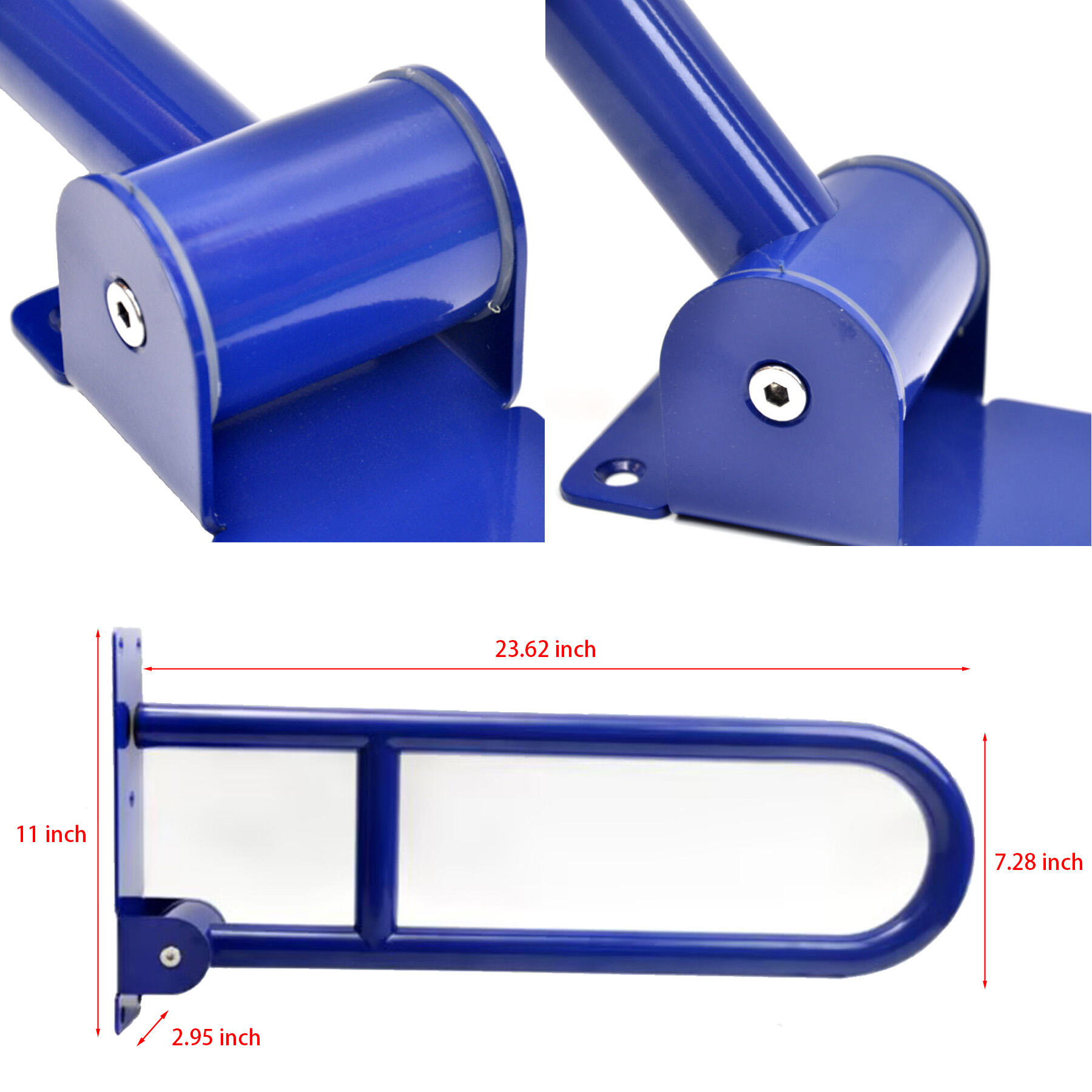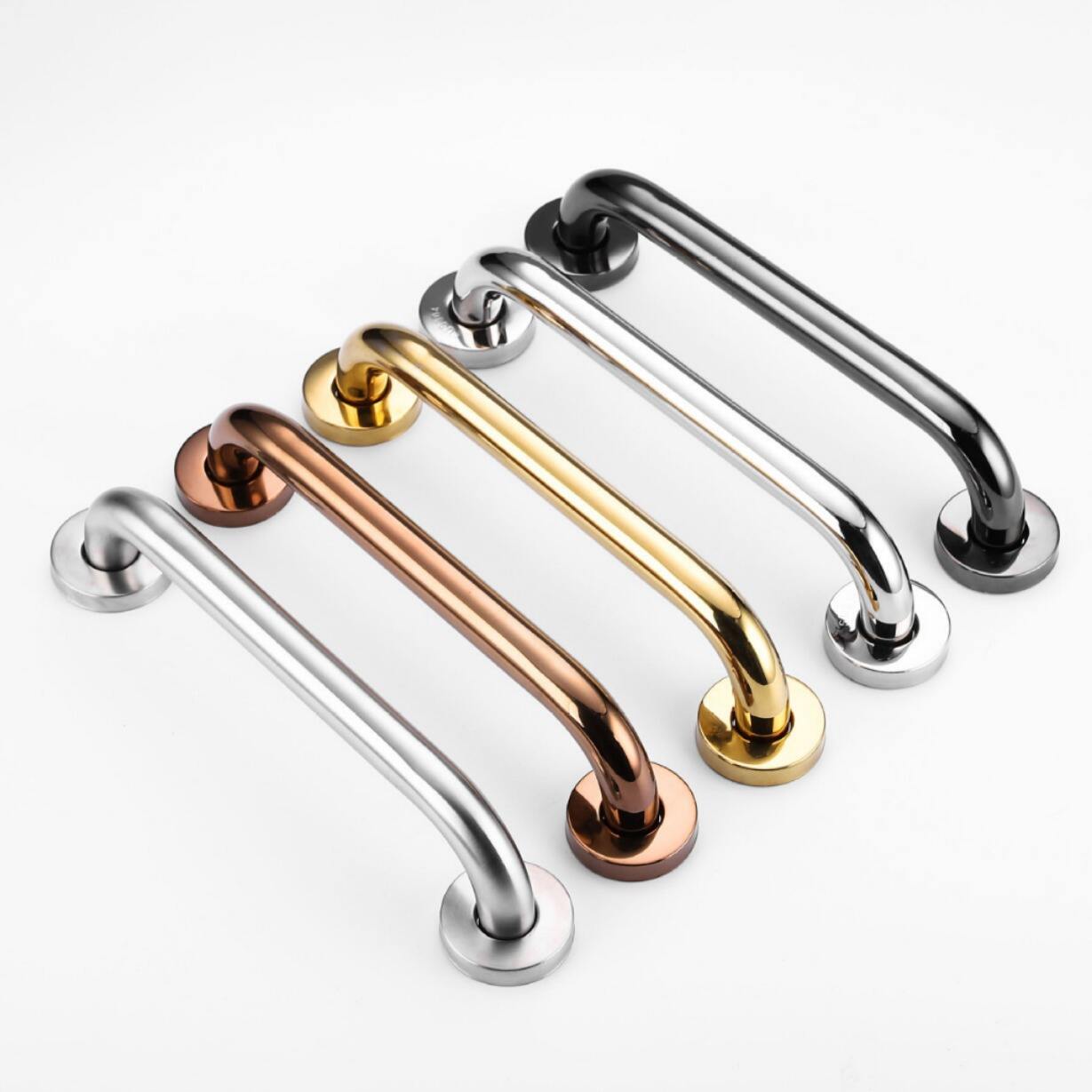Key Features of Effective Safety Grab Bars for Seniors
Material and Grip Quality for Elderly Safety
Non-slip materials like stainless steel with textured surfaces provide critical traction in wet environments. Rubberized grips reduce hand fatigue by 38% compared to smooth metals (National Institute on Aging 2023), while corrosion-resistant coatings prevent deterioration in humid conditions.
Weight Capacity and Durability of Grab Bars
Quality safety grab bars must support at least 250 pounds to meet ADA safety guidelines, with high-end models rated for 500+ pounds. Stress-tested mounting systems using 304-grade stainless steel bolts show 98% fewer failures over 5 years compared to plastic anchors (Home Safety Council 2024).
Size, Length, and Ergonomic Design for Senior Accessibility
ADA-recommended 1.25"-1.5" diameters accommodate arthritic hands, while 18"-42" lengths adapt to varied bathroom layouts. Curved bars improve leverage by 27% for sit-to-stand motions compared to straight designs (Journal of Geriatric Rehabilitation 2023).
ADA-Compliant Features and Universal Design Principles
ADA-compliant bars are mounted 33"-36" from the floor and include slip-resistant end caps. Universal design principles require 1.5" clearance from the wall to allow forearm support during wheelchair transfers.
Core Safety Certifications and Industry Standards for Safety Grab Bars
Top models carry ICC-ES ESR-4252 certifications verifying load capacities of 250+ lbs, while ISO 13485 accreditation ensures medical-grade manufacturing. ANSI A117.1 standards mandate surface temperatures below 120°F to prevent scalding.
The Role of Safety Grab Bars in Preventing Falls Among the Elderly
Bathroom Fall Statistics Among Seniors and the Impact of Grab Bars
According to CDC data from 2023, about 8 out of 10 bathroom injuries among seniors aged 65 and older happen because they slip or fall, and roughly a third of these incidents take place around bathtubs and showers. The combination of wet floors and limited mobility makes bathrooms particularly dangerous for older folks. When homes have grab bars installed correctly, emergency room visits related to falls drop by as much as 61%. These simple devices provide real help when someone needs extra stability while getting in and out of the shower or sitting down on the toilet. Many families overlook installing them until after an accident occurs, but proactive installation can make all the difference in preventing serious injuries.
How Safety Grab Bars Enhance Stability for Mobility Impaired Users
Horizontal and diagonal grab bars form three-dimensional support networks, particularly beneficial for seniors with arthritis, Parkinson's, or post-surgical recovery. Clinical trials show they improve weight distribution by 42% during transfers. Textured, ADA-compliant grips deliver 360-degree traction when wet, and reinforced mounts withstand up to 500 lbs exceeding federal slip-resistance requirements.
Integration With Broader Bathroom Safety Strategies for Elderly Care
Grab bars work best alongside other bathroom safety features like non slip floors, shower benches, and lights that turn on automatically when someone moves around. According to those CDC fall prevention guidelines from last year, homes that make several different changes together cut down hospital visits because of falls by almost four fifths. Most occupational therapists suggest installing grab bars where people naturally walk through spaces - think near doors, next to toilets, and definitely on shower walls. These spots become sort of invisible safety nets for folks who might otherwise lose their balance.
Optimal Placement and Installation of Safety Grab Bars
Recommended Grab Bar Height From Floor Based on ADA and Geriatric Guidelines
The optimal mounting height is 33"-36" above the finished floor, per ADA and geriatric mobility research. This range supports safe sit-to-stand transitions for 95% of seniors. Installations outside this window increase lateral sway by 38% during transfers (National Institute on Aging 2023), compromising stability.
Shower and Tub Safety: Horizontal, Vertical, and Diagonal Placement Strategies
A multi-directional setup maximizes safety:
- Horizontal bars on back shower walls aid sitting and standing
- Vertical bars on tub entry walls assist with stepping in and out
- Diagonal bars at 45° angles near toilets align with natural hand placement
A 2024 bathroom safety study found that three-directional support reduces slip incidents by 67% compared to single-axis installations.
Common Locations for Maximum Effectiveness (Near Toilet, in Shower, Beside Tub)
Focus on high risk areas:
- Adjacent to the toilet (18"-24" from bowl center)
- Shower entrance walls (extending 12" beyond curtain line)
- Long walls of tubs (covering 80% of soaking length)
Installation in Studs vs. Hollow Walls: Ensuring Secure Mounting for Safety Grab Bars
Stud-based installations offer 2.4x greater torsion resistance (ASTM F446-22). For tile surfaces, use carbide-tipped drill bits and stainless steel anchors rated for wet environments to ensure long term security.
Material Durability and Long Term Performance in Wet Environments
Comparison of Stainless Steel, Aluminum, Brass, and Composite Materials
When it comes to durability in medical environments, stainless steel remains king of the hill, often standing up to wear and tear for around 15 to maybe even 20 years according to some research from Geriatric Safety Institute back in 2023. The main reason? It just handles moisture so much better than other materials. Aluminum isn't bad either since it provides pretty good protection against corrosion while weighing about 30 percent less than steel, although hospitals near saltwater locations usually need to apply special coatings to prevent damage. Brass equipment demands regular polishing if infection control is going to be maintained properly. Then there are composite materials such as fiberglass reinforced nylon which don't rust and actually come with those nice textured surfaces that make them easier to handle. They do weigh less though, roughly 12% lighter than traditional metal alternatives, which can sometimes be an advantage depending on what exactly needs to be supported.
Corrosion Resistance and Hygiene Maintenance in High-Moisture Areas
Non-porous surfaces are essential textured materials can harbor microbes, accelerating corrosion by 40% (CDC 2022). Stainless steel and anodized aluminum retain integrity after 5,000 simulated cleaning cycles under chlorine exposure. Composites eliminate oxidation risks but need UV-stabilized formulations to prevent degradation in sunlit bathrooms.
Lifespan and Cost Efficiency of Premium vs. Budget Safety Grab Bars
Stainless steel premium models come at a price tag roughly double or triple what basic aluminum versions cost initially. But these high-end options tend to stick around for about two decades, which means spending on replacements drops by almost two thirds over time according to research from Johns Hopkins back in 2021. The cheaper alternatives coated with thin layers of powder paint don't hold up so well though. Most of them start showing problems after just three to seven years when exposed to lots of steam, and when they need replacing, taking them out and putting new ones in actually damages the walls behind them. That's why many professionals recommend looking at modular composite systems instead. These have parts that can be swapped out individually, so even if some components wear down, the whole system stays functional for eight to ten extra years without having to tear everything apart.
Innovations and Trends in Safety Grab Bar Design for Elderly Users
Adjustable and modular safety grab bars with tool-free installation
Modern designs feature tension-mounted, tool-free systems that don’t require drilling. Swiveling joints and adjustable extensions (34–42") allow caregivers to customize configurations easily. A 2023 American Institute of Architects survey found 78% of aging-in-place renovations now prioritize these adaptable solutions over fixed models.
Emerging trends: Style integration and universal accessibility in modern bathrooms
Today’s grab bars blend seamlessly into home aesthetics with brushed nickel, satin brass, and dual-function units that double as towel racks or toilet paper holders. These designs adhere to Universal Design principles by offering:
- 1.25–1.5" diameter grips suitable for arthritic hands
- Contrasting color accents (72% more visible than chrome in low light)
- Low-profile brackets maintaining required 1.5" wall clearance
This shift reflects a 65% rise in demand for “invisible safety features,” proving that functional support and elegant design can coexist in modern senior-friendly bathrooms.




